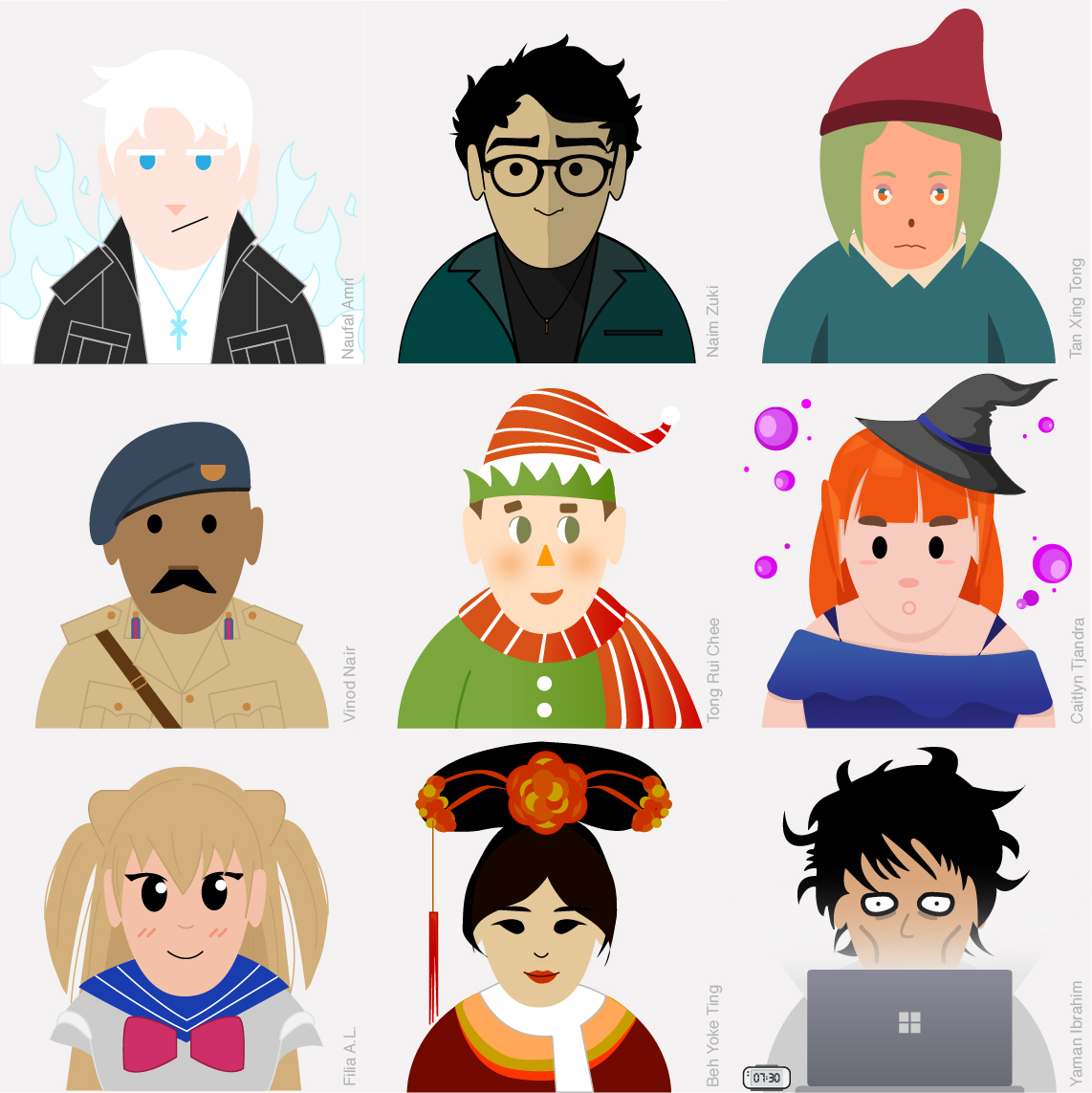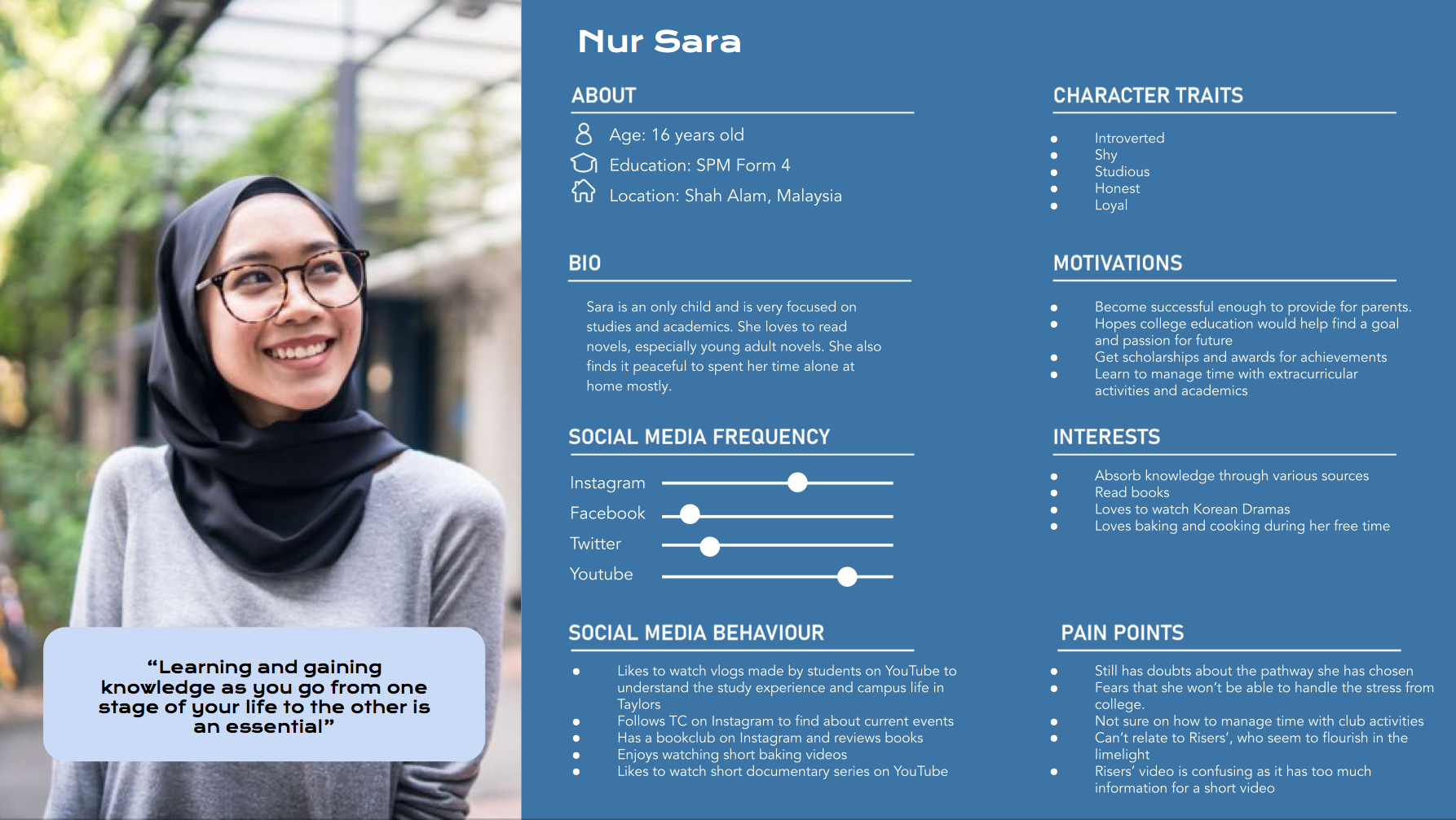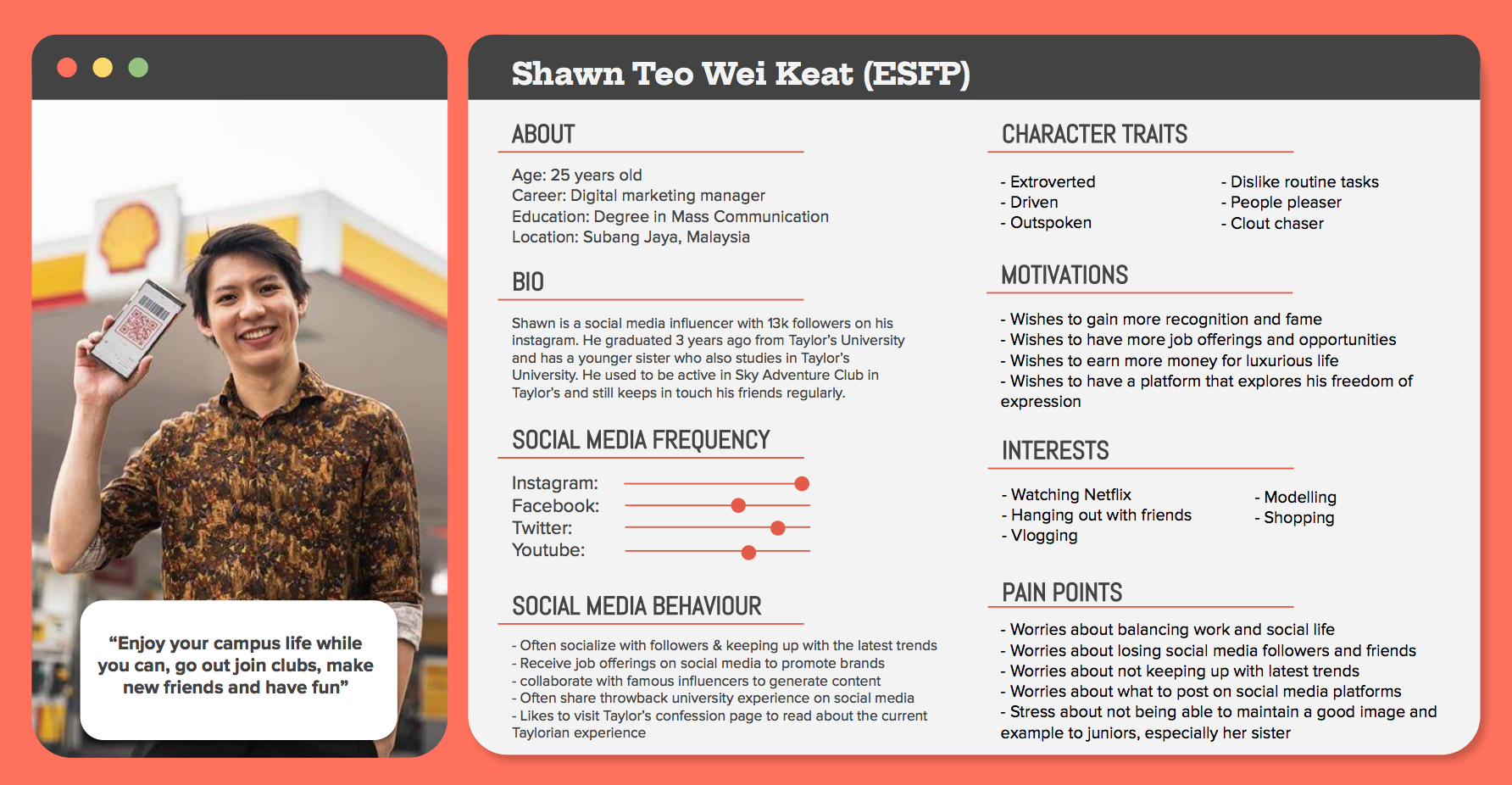As designers, we are often tasked to develop marketing materials, design a campaign and/or strategise for a brand. One of the modules that I am currently teaching at Taylor’s University is Digital and Social Media Communication. Students are exposed to analytics tools, personas, and other aspects of creative formulation to deliver an effective solution for their industry collaborator. And here I often observe that students tend to neglect the insight of their main audience in their projected output.
One of the keys to understanding users is through “personas”. A persona essentially identifies who influences and participates in relationships with the brand as well as into what unites users and the brand. It helps designers (or in this case, students) find the core consumer group or the community to whom the brand matters most to and how they uniquely relate to the brand and what their shared interests or characteristics are.
With personas, designers are able to have a detailed understanding and analytical perspective about their core consumer group by embodying the groups’ attributes. Consideration needs to be taken into account in developing personas — who are the types of consumers, what is their behavior, and what are their needs.

Why build personas?
First and foremost, personas are a design tool for product design and development that help designers envision a manageable and memorable cast of characters who represent the composite of typical audiences (instead of a segment of thousands of people).
Persona also shape the user-centric as well as the goal of design. What this means is that in the process, designers create empathy with fictional characters that resemble the core consumer group and predict their realistic goals, needs, expectations, and pain points. This is derived from multiple data collection methods such as empathy mapping and interviews as well as quantitative surveys.
By having personas, a brand custodian will be able to guide product design decisions. Persona influences and prioritizes design and functionality decisions by answering simple yet fundamental questions such as, “What would Clare want?” or “What would make Mr. Lee’s life easier?”.
Very often designers are working within a team setup with brand stakeholders, therefore, persona allow a clear and common language by establishing a shared understanding with all parties involved.

Approach to creating Personas
As part of understanding the consumer, personas start with research. The generation process can be defined as:
- Understanding product users with research and statistics (analytics)
- Examining the data for themes and patterns
- Distilling the identified patterns into individual characters that embody the findings
- Bringing the characters to life with biographical information and imagery
Some samples of personas developed by my students in Digital and Social Media Communication class:


By going through all these processes, students find it easier to gauge the communication and design strategy that would be best to apply to their final design output. It allows them to meet the industry collaborator’s aim and pain points accurately and objectively.
Credits: GrowthOps, 2019
